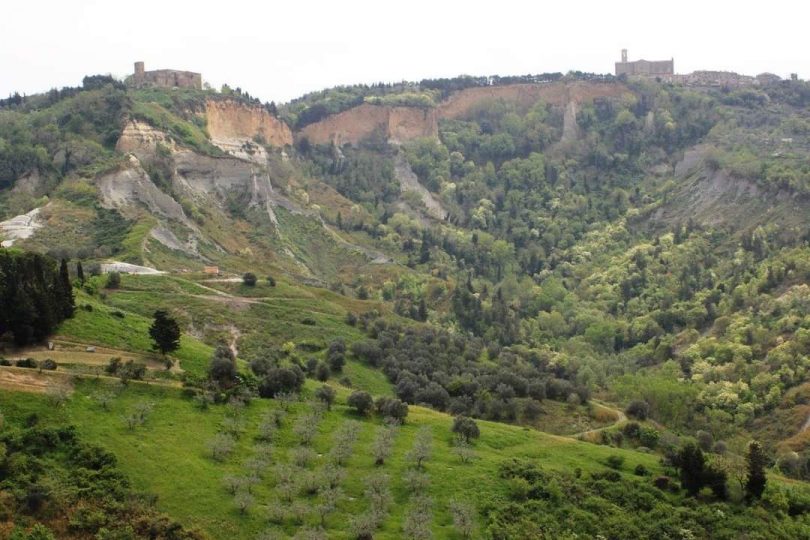Bicycle - Gravel
Bicycle - MTB
The Balze and Calanchi of Volterra
We have described only the points of interest located outside the town area.
This is a scenic ring-route with no particular technical difficulties. The itinerary starts right near the edge of the Balze chasm and is designed to allow people to discover these weird, sharp-looking shapes created by erosion: the Balze and the Calanchi and the typical agriculture and pastoral farming based system of these bizarre hills. The route features long panoramic stretches over the clay hills that stretch as far as the eye can see until they reach the sea, scarred on the steep southern slopes by the sharp ridges of the Calanchi showing their naked whiteness in the sun while the softer, less steep slopes are farmed with cereals. The Balze, with their steep walls gilded by sand and sandstone, are the result of a spectacular natural phenomenon (still going on today) in which land gradually slides on the sediments left by a sea 2.5 million years ago and they are particularly stunning at sunset. The Badia, a massive Camaldolese monastery of medieval origin which looks as if it had been hanging somewhere between the earth and the sky for its 10 centuries of history proudly stands, as a monument of extraordinary importance and a place of great charm and mystery and defies the chasm of the Balze that advances inexorably. Leaving the Abbey behind you can take a detour on a dirt road to reach the small church of San Cipriano, an exceptional watching point to enjoy the Calanche which here are of notable beauty and show differences in length and height. These hills are home to the renowned PDO cheese “Pecorino delle Balze Volterrane”, typically with vegetable rennet from wild thistle which is abundant in the pastures. Once you reach the end of this dirt road also called the “Path of Balze and Calanchi” you will find some possible detours that will allow you to easily reach the environmental sculptures of the artist Mauro Staccioli, extraordinary expressions of “land art” that interpret the essence of the artist’s “places of experience” with installations that frame the poignant landscape of the crags, gullies and windswept hills dominated from above by Volterra.

